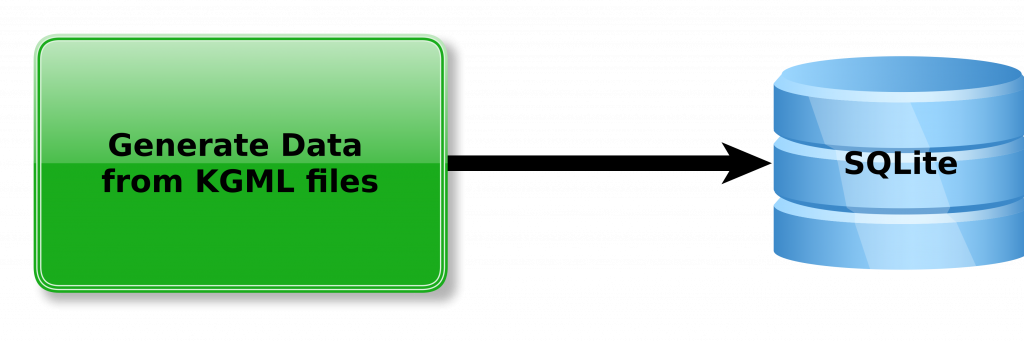A canonical pathway KGML file typically contains three primary types of XML tags*, each serving a distinct role in the representation of metabolic pathways:
- Entry – Specifies entities within the pathway, such as enzymes, compounds, reactions, or maps.
- Relation – Describes associations between entities, often identifying compounds that link two enzymes.
- Reaction – Details enzymatic reactions, defining the substrates and products involved.
The pipeline utilizes each Entry tag as an input and systematically integrates it with corresponding Relation and Reaction records. This process enables the accurate inference of relationships between enzymes, reactions, and compounds, facilitating the construction of a comprehensive network representation of the metabolic pathway.

The processed information, including the inferred relationships between enzymes, reactions, and compounds, is systematically stored in a structured database. This database serves as the foundation for subsequent network analyses, enabling efficient retrieval and manipulation of metabolic pathway data for visualization, metric calculation, and articulation point detection.

